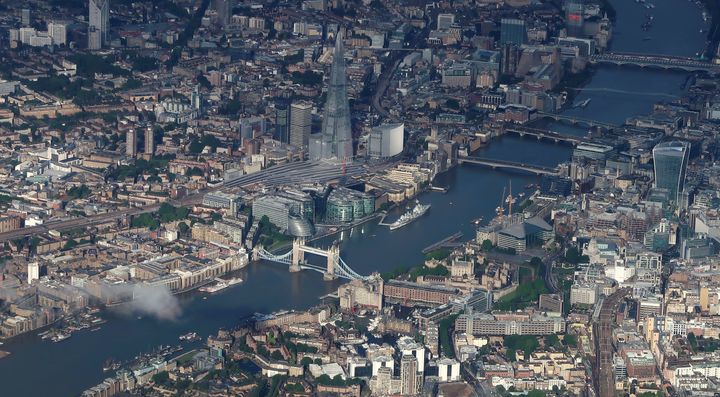
In cities across the world, most streets are named after men and only a tiny proportion commemorate women. The streets we walk every day recognise and remember men, often historical figures or wealthy landowners or benefactors. Men’s names dominate the landscape. Women’s names are missing.
Take Rome, for example. In 2012, geography teacher Maria Pia Ercolini and her team painstakingly examined each of Rome’s 16,550 streets and discovered that only 580 of them - 3.5% - were named after women (her research findings were reported by the BBC, here). A similar picture was uncovered in Paris in 2015, when feminist group Osez le Féminisme! found that just 2.6% of streets were named after notable women (reported in the Independent, here).
Rome and Paris are not unusual. Mapbox has studied the distribution and location of gender in the streets of seven major cities: Paris, San Francisco, Bengaluru, Chennai, Mumbai, New Delhi and London. They found that streets named after men are not only more numerous than those named after women, but also more centrally located.
Where are all the women?
This week, a group of us who are women working in London’s Bloomsbury are taking action to change this picture, launching a campaign called Where are all the women? We work at Doughty Street Chambers and we are proud to be based in Bloomsbury, with its rich history of inspirational women leaders from politics, law, journalism, and art. Within a few hundred metres of our Chambers are buildings where the suffragettes built their campaigns, as well as the former home of the first woman barrister in England and Wales, Helena Normanton QC. However, our public spaces are dominated by men: statues of men, blue plaques commemorating men, and even the street names themselves honouring men.
We have decided to reclaim - and rename - local streets, to mark the lead-up to International Women’s Day on 8 March 2018 and the centenary of women’s suffrage in 1918. For eight days, from 1 to 8 March, we will recognise and celebrate some of the amazing local women in Bloomsbury who are too often forgotten. We are reimagining our streets renamed.
Doughty Street becomes Lyons Street
We started with Doughty Street, on 1 March. Built in the 1790s, it was named after Henry Doughty, a landlord of the area at the time.
Yesterday, it became Lyons Street, in honour of Jane Lyons. She ran a ‘Private Hotel and Boarding House’ at 48 and 49 Doughty Street from 1901-1923 (the buildings are now the Charles Dickens Museum). Born in 1836, Jane Lyons moved in London in the late nineteenth century. In a brilliant blog by researcher and writer Elizabeth Crawford, she has described how Jane Lyons had by 1901 become the proprietor of the Boarding House at Doughty Street, and, “on the day of the census, she had 24 boarders – all women – … clerks, teachers and typists (and a stockbroking nephew).” By 1911 her boarders included both men and women.
Jane Lyons gave shelter to suffragettes at her Boarding House. One such woman was Mary Richardson. In her autobiography, Laugh a Defiance, she describes being given shelter in Miss Lyons’ Boarding House in October 1913, when she was let out of Holloway under the terms of the Prisoners (Temporary Discharge for Ill-Health) Act 1913, commonly known as the ‘Cat and Mouse Act.’ The Act was the Government’s attempt to deal with hunger-striking suffragettes: it allowed for the early release of prisoners who were so weakened by hunger striking that they were at risk of death. They were to be recalled to prison once their health was recovered, where the process would begin again. On 10 March 2014, it was from Miss Lyons’ Boarding House that Mary Richardson set out for the National Gallery when she attacked the Velasquez painting, The Toilet of Venus (known as The Rokeby Venus) with a butcher’s hammer she had bought on the Gray’s Inn Road.
Another woman who found shelter at Jane Lyons’ Boarding House was Annie Kenney, a working class suffragette from Manchester who became a leading figure in the Women’s Social and Political Union. She has been described as having stayed there when she was on the run.
Jane Lyons would have been in her late 70s at this time, when she was providing a roof over the heads of Mary Richardson, Annie Kenney and many others. She was 78 in 1914 when Mary Richardson set off for the National Gallery. For years, Jane Lyons took women in when they left Holloway Prison, when they travelled to London to protest, and when they had been turned away by their families. Her Boarding House was, for many women, a safe house, providing shelter when they were fighting for their rights.
Guilford Street Becomes Lawson Street
Guilford Street in Bloomsbury, just north of Doughty Street, is named after Lord Frederick North, a former Prime Minister and the second Earl of Guilford. Today, 2 March, we imagine it renamed as Lawson Street, to honour Marie Lawson. Marie was born in Sunderland in 1881, one of 6 siblings and the child of a solicitor. She studied law at the LSE but since law was a profession then closed to women, she could not become a lawyer and instead became a clerk at an engineering firm. At 21 years old, she took her own flat at 4 Guilford Street in Bloomsbury, which was then considered “a rather disreputable area” and “a forward thing to do” (Elizabeth Crawford, The Women’s Suffrage Movement: A Reference Guide 1866-1928). Marie was a member of many suffragette and suffragist groups, and was elected to the Executive of the Women’s Freedom League in 1908. A year later, she formed Minerva Publishing Company, in order to produce The Vote. That same year, she refused to pay income tax and a year later she joined the newly founded Women’s Tax Resistance League. In 1911 she was one of the women who ‘vanished for the vote’ by refusing to register for the census. The records describe her and Emily Ridler, both “over 30,” as follows: “4 Guilford Street… Census night: resisters. Occupation: secretaries to suffragettes.”
8 Days. 8 Streets. 8 Women.
We are proud to honour Jane Lyons and Marie Lawson. We will be renaming another local street each day from now until International Women’s Day on 8 March 2018, reclaiming eight of Bloomsbury’s streets to mark the all-too-often overlooked and forgotten contribution of women to our history.
